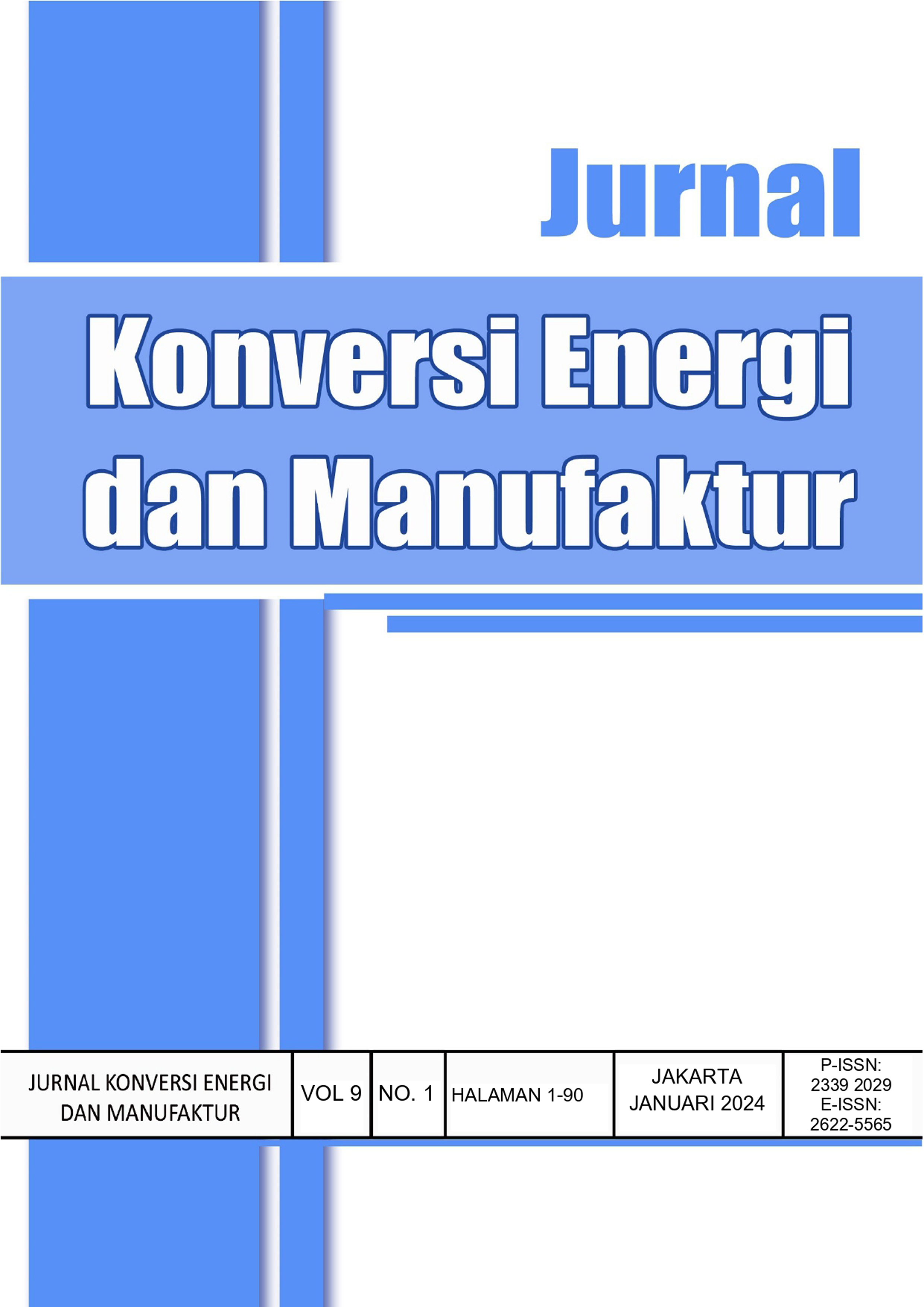ANALISIS LAJU DEFORMASI PAHAT HSS PADA SIMULASI PEMBUBUTAN MESIN CNC DENGAN APLIKASI ANSYS
Analysis of HSS Tool Deformation Rate on CNC Machine Turning Simulation with ANSYS Application
DOI:
https://doi.org/10.21009/JKEM.9.1.7Keywords:
Turning Simulation, Deformation Rate, Elastic Strain, HSS ToolAbstract
The demand to improve quality and productivity in the manufacturing industry underlies the analysis of tool deformation rates in the turning process. The methods used previously are considered inaccurate, and the provided information is incomplete. Therefore, detailed and accurate simulations are needed to determine deformation and strain values in HSS chisels. This study aims to obtain deformation and strain values on high speed steel (HSS) chisels in the process of turning ST42 steel workpieces using the finite element methods (FEM) method. The analysis was carried out using the ANSYS explicit dynamics application. This application aims to simulate complex physical phenomena by entering predetermined parameters, including diameter, spindle rotation, and workpiece and tool properties. HSS chisels are used in this simulation with ST42 steel workpieces. The variables in this study were the workpiece diameters of 30 mm, 40 mm, and 50 mm, with the same length of 200 mm. From the simulation results, it is evident that the maximum deformation value of the HSS tool on a diameter of 30 mm workpiece is 205.04 µm at a time step of 1.0 x 10-4 seconds. On a diameter of 40 mm workpiece, it is 205.19 µm at the same time step, and for a workpiece with a diameter of 50 mm, the tool deformation is 205.23 µm at the same time step. Additionally, the strain value on the HSS chisel with a workpiece diameter of 30 mm is 0.689 µm at a time step of 1.0 x 10-4 seconds. For a workpiece with a diameter of 40 mm, the strain is 0.783 µm at a time step of 1.0011 x 10-4 seconds, and on a workpiece with a diameter of 50 mm, the final strain on the tool is 0.866 µm at a time step of 1.0 x10-4 seconds.
References
[2] S. P. Patil and D. M. Tilekar, “Tool Wear Detection of Cutting Tool using Matlab Software,” International Journal of Engineering and Technical Research (IJETR), vol. 2, no. 11, pp. 362–366, 2014.
[3] F. Fahrizal and E. Suprapto, “Optimasi Parameter Pemesinan untuk Minimasi Keausan Pahat pada Pembubutan Baja Karbon Rendah,” Jurnal Pendidikan Teknik Mesin Undiksha, vol. 10, no. 1, pp. 10–19, 2022, doi: 10.23887/jptm.v10i1.41418.
[4] S. Mujiarto and A. Kusairi, “Analisis Keausan Pahat Potong Karbida Ditinjau dari Perubahan Gaya Pemotongan dengan Pengamatan Daya Motor pada Mesin Bubut CNC Emco Turn 242,” POLHASAINS: Jurnal Sains dan Terapan Politeknik Hasnur, vol. 3, no. 1, pp. 111–121, 2014.
[5] S. Lubis, S. Darmawan, Rosehan, and T. Tanuwijaya, “Analisa Pertumbuhan Keausan Pahat Karbida Coated dan Uncoated Pada Alloy Steel AISI 4340,” Jurnal Energi dan Manufaktur, vol. 9, no. 2, pp. 114–118, 2016.
[6] Ardyan, Erwansyah, and Y. F. Arriyani, “Studi Eksperimen Pengaruh Variasi Kecepatan Potong dan Kedalaman Pemotongan terhadap Kekasaran Permukaan Benda Kerja Hasil Pembubutan Material Baja ST 41 menggunakan Pahat HSS,” SJoME, vol. 3, no. 1, pp. 65–72, 2021.
[7] S. P. F. Dewangga, I. N. P. Nugraha, and K. R. Dantes, “Pengaruh Variasi Kecepatan Putaran Mesin Bubut terhadap Keausan pada Alat Potong Pahat HSS Tipe Bohler MO 1/2x4,” Jurnal Pendidikan Teknik Mesin Undiksha, vol. 5, no. 1, 2017, doi: 10.23887/jjtm.v5i1.9238.
[8] Sudjatmiko, A. Suprapto, and Darto, “Karakteristik Keausan dan Umur Pahat HSS Hasil Quenching Melalui Pendinginan Nitrogen pada Proses Pembubutan Al-T-6061,” Jurnal Mechanical, vol. 4, no. 2, pp. 22–31, 2013.
[9] J. Sui, R. Kountanya, and C. Guo, “Development of a Mechanistic Force Model for CNC Drilling Process Simulation,” Procedia Manuf, vol. 5, pp. 787–797, 2016, doi: 10.1016/j.promfg.2016.08.064.
[10] A. Skowronek and A. Grajcar, “Effect of Deformation Temperature on the Mechanical Behavior and Stability of Retained Austenite in TRIP-Assisted Medium-C Multiphase Steel,” Materials, vol. 13, no. 11, p. 2433, 2020, doi: 10.3390/ma13112433.






















